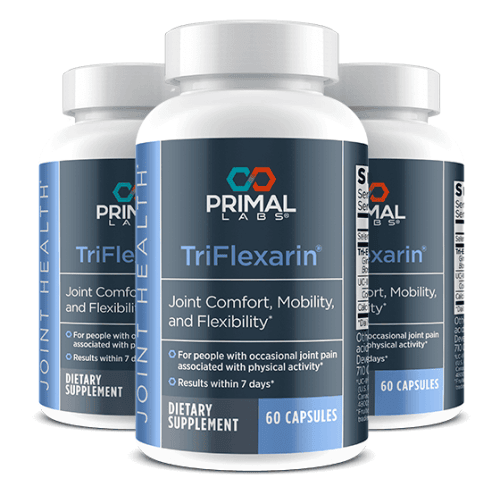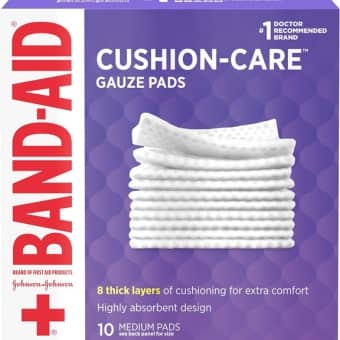As menopause changes a woman’s body, joint pain is often an unwanted side effect. But you can take proactive steps to prevent joint pain from menopause before it starts. You can keep joint pain away at this stage of life by doing certain exercises. Also, by keeping a healthy weight, and by eating a balanced diet with many anti-inflammatory foods, let’s look at some good strategies. They will help you stay active and pain-free during menopause.

Table of Contents
- I. Understanding Menopause and Joint Pain
- II. Healthy Diet and Nutrition
- III. Regular exercise and physical activity.
- IV. Maintaining a healthy weight.
- V. Bone Health and Supplements
- VI. Lifestyle changes and habits.
- VII. Managing Stress and Mental Health
- VIII. Factors that contribute to menopause joint pain.
- IX. How to Identify Early Signs of Menopause Joint Pain
- X. Tips for Preventing Menopause Joint Pain
- XI. Common Mistakes to Avoid When Preventing Menopause Joint Pain
- XII. Overcoming Challenges and Staying Motivated
- XIII. More resources are available for preventing menopause joint pain.
- How a Healthy Lifestyle Can Help Prevent Menopause Joint Pain
- FAQ
Key Takeaways:
-
Regular exercise can help prevent joint pain from menopause. It does this by keeping joints and weight healthy.
-
Eating a healthy diet can help. It’s should be well-balanced and rich in antioxidants, omega-3 fatty acids, and calcium. This diet can support joint health and reduce inflammation.
-
Stay hydrated. Drinking lots of water can keep joints lubricated and reduce joint pain in menopause.
I. Understanding Menopause and Joint Pain
1.1. Defining Menopause and Hormonal Changes
One key aspect to understand is that menopause marks the end of a woman’s periods and fertile years. During this time, the body undergoes big hormonal changes. Estrogen levels drop.
1.2. The Connection Between Menopause and Joint Pain
People often overlook one factor. It’s the link between menopause and joint pain. Many women have joint pain and stiffness during menopause. This can impact their quality of life.
Menopause can cause joint pain. This is due to the drop in estrogen levels. It can cause inflammation and cartilage loss in the joints. Additionally, hormonal changes during menopause can also affect collagen production. Collagen is a protein that gives structure to joints and tissues.

1.3. Why women are more prone to joint pain during menopause.
Menopause is a time of significant hormonal changes. These include a drop in estrogen. Estrogen is crucial for joint health. It does this by controlling inflammation. It also promotes the repair of cartilage and connective tissues.
Hormonal changes and natural aging make women prone to joint pain. This happens during menopause. This can be worse due to genetics, lifestyle, and weight gain.
II. Healthy Diet and Nutrition
2.1. The Role of Diet in Maintaining Joint Health
An important factor in preventing menopause joint pain is maintaining a healthy diet. Eating a well-balanced diet rich in nutrients can support your joint health. It’s also able to cut the risk of inflammation and pain.
2.2. Foods Rich in Calcium and Vitamin D for Stronger Bones
Eat foods rich in calcium and vitamin D. They’ll give you stronger bones and better joint health. Dairy products, leafy greens, and fortified foods are great sources of them.
Healthy bones are crucial for joint health. That’s especially true during menopause. That’s when bone density can decline. Eating calcium and vitamin D-rich foods can help. They can prevent joint pain and keep bones strong as you age.

2.3. Foods High in Omega-3 and Anti-Inflammatory Properties for Joint Pain Relief
Foods are high in omega-3 fatty acids and have anti-inflammatory properties. They can help reduce joint pain and inflammation. Eat fatty fish, nuts, seeds, and leafy greens. They’ll relieve menopause joint pain.
Salmon and walnuts are rich in omega-3 fatty acids. They reduce body inflammation, easing joint pain that women often get during menopause. Adding these foods to your diet can support joint health and mobility.
III. Regular exercise and physical activity.
3.1. The importance of maintaining physical activity for joint health.
To prevent menopause joint pain, it’s crucial to stay active. There’s a direct correlation between physical activity and joint health. Regular exercise helps keep the joints flexible, strong, and mobile. It reduces the risk of pain and stiffness.
3.2. Exercises such as walking, swimming, and it’s
Exercises like walking, swimming, and yoga are easy on the joints. They can help prevent joint pain from menopause. These low-impact activities improve flexibility. They also strengthen muscles around the joints and promote well-being.
Regular practice helps. The exercises vary. They include walking, swimming, and yoga. They can help menopausal women keep their joints healthy. These exercises can also prevent pain and discomfort.

3.3. The strengthening exercises aim to support the joints.
It’s very important to add strengthening exercises to your routine. They’re key for supporting joint health. The exercises increase muscle strength and joint stability. They reduce the impact on the joints and lower the risk of pain and injuries.
These exercises may include bodyweight exercises, strength training, and Pilates. They can improve joint health and it’s quality during menopause.
IV. Maintaining a healthy weight.
4.1. The Benefits of Maintaining a Healthy Weight for Joint Health
A healthy weight reduces stress on the joints. This cuts the risk of joint pain and inflammation from menopause. Keeping your weight in a healthy range can also improve your mobility and quality of life.
4.2. How to Lose Weight and Maintain an Ideal Weight
On your journey to weight loss, focus on making sustainable lifestyle changes. These include eating a balanced diet, exercising often, and staying hydrated. Talking to a doctor or nutritionist can help. They can tailor a plan to fit your needs and ensure long-term success.
Excess weight can make joint pain worse. So, losing extra pounds can ease the strain on your joints. Aim for slow weight loss. Do it with healthy eating and exercise. This will keep you at a weight that’s best for your health.

4.3. Tips for Sustaining Weight Loss
-
Healthy eating habits are crucial for maintaining weight loss. Focus on a balanced diet rich in fruits, vegetables, lean proteins, and whole grains.
-
Regular physical activity is key to sustaining weight loss. Add exercise to your daily routine. It’s going to help burn calories and improve fitness. Assume that staying active is a lifelong commitment to your health and well-being.
Another important aspect of sustaining weight loss is staying consistent with your efforts. Set realistic goals. Track your progress. Make changes as needed to ensure lasting results. By staying healthy, you can prevent menopause joint pain. You can also enjoy a better life.
V. Bone Health and Supplements
5.1. Enhancing bone health can help prevent joint pain.
Bone health can often be a factor in linking joint pain during menopause. By focusing on strengthening your bones, you can prevent or ease joint discomfort. Doing weight-bearing exercises, like walking or weightlifting, can help maintain bone density. They also reduce the risk of joint pain.
5.2. Supplements and Vitamins That Support Bones and Joints
Vitamins, such as calcium and vitamin D, are crucial. They help maintain strong bones and reduce joint pain. These supplements can help support bone density and joint health. You must talk to a healthcare professional before starting any new supplement. This is to make sure it’s safe and right for you.

5.3. Tips for Using Supplements
-
Take supplements with meals to aid their absorption.
-
Follow the recommended dosage guidelines provided on the supplement’s packaging.
Understanding how supplements can help your bone health and joints is key. They prevent joint pain from menopause. By taking these supplements daily, you can support your body’s needs and reduce the risk of joint pain. Always rank whole foods for nutrients. Consider supplements as a bonus. They complement a healthy diet and lifestyle.
VI. Lifestyle changes and habits.
6.1. Lifestyle Changes to Help Prevent Joint Pain
An active lifestyle can help prevent menopause joint pain. Regular exercise helps. Maintaining a healthy weight does too. So does eating a balanced diet rich in nutrients. All these things can contribute to joint health.
6.2. Creating a daily exercise routine for consistency.
Assuming a daily exercise routine can be hard. But, it is vital for preventing joint pain. Start with small goals. Then, raise the intensity and length of your workouts. This will build strength and flexibility.
Making a habit of daily exercise can help prevent menopause joint pain. It does this by keeping your joints flexible and strong. Doing activities like walking, swimming, or yoga can improve joint mobility. They also reduce the risk of getting joint pain.

6.3. Avoiding harmful habits such as smoking and excessive alcohol consumption.
Some habits, like smoking and too much drinking, can make joint pain worse. This is especially true during menopause. These habits can cause inflammation and weaken bones. They increase the risk of joint problems.
Smoking and drinking too much can harm joints. Avoiding these habits reduces inflammation in the body. It also promotes joint health and lowers the chances of menopause-related joint pain.
VII. Managing Stress and Mental Health
7.1. The Impact of Stress on Joint Health
Stress can worsen joint pain by causing increased inflammation in the body. When stress is high, the body releases cortisol. Cortisol can cause joint pain and inflammation.
7.2. Stress Reduction Techniques such as meditation and deep breathing.
The mind and body connect. Managing stress can help reduce joint pain. Meditation and deep breathing can reduce stress. They also lower body inflammation.
Meditation involves focusing the mind. It also involves clearing the jumbled thoughts that are crowding it. Deep breathing exercises can calm the nervous system. They reduce stress hormone production. This can help joint health.

7.3. The Importance of Adequate Sleep and Rest for Joint Health
Now, more than ever, it’s crucial to rank sleep and rest for joint health. A lack of sleep can raise inflammation. It can also heighten pain perception. This makes joint pain feel worse.
Meditation can also be a useful tool in promoting better sleep hygiene. Meditation can improve sleep. It’s done this by calming the mind and reducing stress before bed. This helps your body repair and restore itself at night.
VIII. Factors that contribute to menopause joint pain.
After menopause, many women may experience joint pain due to various factors. Knowing these contributors can help in making ways to prevent or ease the discomfort.
-
Hormonal changes play a big role. They cause joint pain during menopause.
-
Aging causes bone density to decline. This is a key factor in joint pain for menopausal women.
-
Other medical conditions can raise the risk of joint pain during menopause.
8.1. Hormonal Changes and Their Impact on Joints
Onset of menopause brings hormonal fluctuations, which have an impact on joint health.
Bone density decreases with age, leading to weakened bones and increased joint vulnerability.
Bones with less density can get osteoporosis. This makes joints more prone to pain and stiffness.
8.3. Other medical conditions that increase the risk of its joint pain.
Arthritis or lupus can worsen joint pain during menopause.
Changes can make the body’s immune system or inflammatory response worse. This can increase joint discomfort.

IX. How to Identify Early Signs of Menopause Joint Pain
9.1. Recognizing the symptoms of joint pain.
Identifying joint pain symptoms is crucial. It helps catch early signs of menopause-related joint pain. Symptoms may include stiffness, swelling, and tenderness. Joints may also have less range of motion.
9.2. Monitoring Joint Health Through Regular Check-ups
Pain monitoring your joint health through regular check-ups with a doctor can help. It’s can lead to early detection of any issues related to menopause joint pain. The check-ups may include physical exams, imaging tests, and blood work. They’re to assess joint health.
Identifying joint pain associated with menopause early can help manage it better. Regular check-ups can help track changes in joint health. They’ve provided needed help to reduce pain.

9.3. Identifying Triggers and Patterns of Joint Pain
Note any sudden changes in joint pain patterns or triggers. Then, discuss them with a healthcare provider. Keeping a journal to track activities, diet, and other factors can help find its triggers. These triggers cause menopause-related joint pain.
Many factors can influence joint pain. By finding triggers and patterns, people can work to manage and reduce it. Consulting a healthcare provider for guidance on managing these triggers is advisable.
X. Tips for Preventing Menopause Joint Pain
Keep these tips in mind to prevent menopausal joint pain:
-
Stay active and mobile.
-
Maintain a healthy weight.
-
Include strength training exercises.
-
Eat a balanced diet rich in calcium and vitamin D.
-
Stay hydrated
Noticing body changes and taking action can stop or cut joint pain in menopause.
10.1. Starting Early: Preventive Measures for Joint Health
Small lifestyle changes help. They include regular exercise, a healthy diet, and staying hydrated. They can improve joint health in the long run. This lowers the risk of menopausal joint pain.
10.2. Staying active and mobile can help reduce joint pain.
Some activities can help. These include low-impact exercises, stretching, and yoga. They can improve joint flexibility, reduce stiffness, and ease menopausal joint pain. Active individuals are more likely to experience less joint discomfort during menopause.
10.3. Maintaining a Healthy Lifestyle for Well-being
Being active, eating well, and sleeping can boost well-being. So can managing stress and not smoking. This includes joint health during menopause.

XI. Common Mistakes to Avoid When Preventing Menopause Joint Pain
11.1. Ignoring early signs of joint pain.
Many women tend to ignore the early signs of joint pain, attributing it to normal aging. But, these symptoms could mean underlying issues. You can prevent or manage them with early intervention.
11.2. Failing to maintain a healthy weight.
Maintaining a healthy weight is crucial in preventing joint pain during menopause. Excess weight puts added stress on joints, exacerbating any existing pain or discomfort.
Eating well and exercising can help you reach a healthy weight. This reduces the risk of getting joint pain.
11.3. Not prioritizing bone health and supplements.
It’s important to rank bone health during menopause. Taking supplements, like calcium and vitamin D, is key. These nutrients help keep bones strong. They reduce the risk of joint pain and osteoporosis.
Also, adding weight-bearing exercises to your routine can help improve bone health. They can also prevent joint pain in the long run.

XII. Overcoming Challenges and Staying Motivated
12.1. Staying Committed to Preventive Measures
Now, staying committed to preventive measures is key in preventing menopause joint pain. Make a schedule. Set reminders. Ask a friend or family member to help you stay on track. They’ve helped with exercise, healthy eating, and other preventive care.
12.2. Overcoming setbacks and maintaining progress.
Preventive measures may face setbacks. These setbacks include injuries or scheduling conflicts. It’s necessary to address these setbacks. Have backup exercises and meal plans. Get professional advice if needed. Most people stay positive and persistent.
Plus, remember that progress is not always linear. Some days may be more challenging than others, and that’s okay. The key is to keep moving forward, no matter the pace.
12.3. Celebrating small victories and milestones.
Setbacks are a natural part of any journey to prevent menopause joint pain. Celebrate small victories. For example, sticking to your exercise plan for a week or trying a new, healthy recipe. These milestones will keep you motivated and inspired to continue your preventive measures.
To stay motivated in stopping menopause joint pain, you must admit it. You must also celebrate your progress. Keep in mind, every small step counts towards a healthier, pain-free future.

XIII. More resources are available for preventing menopause joint pain.
13.1. Recommended Reading and Online Resources
To understand menopause joint pain better, you can use many books and websites. They’ve got valuable insights. Look for reputable sources. They offer information on managing symptoms, adding exercise, and staying healthy during menopause.
13.2. Consulting with healthcare professionals for personalized advice.
There’s no one-size-fits-all solution when it comes to managing menopause joint pain. Ask healthcare professionals for advice. This could be your primary care physician or a rheumatologist. They can give personalized advice for your needs and concerns. They can offer advice on treatment options. They can also tell you about lifestyle changes and potential medications. These can help reduce joint pain.

For instance, a rheumatologist specializes in muscle and autoimmune conditions. They’re well-equipped to address joint pain from menopause. By working with a healthcare professional, you can develop a plan. It will help you manage symptoms and improve your well-being.
13.3. Joining support groups for menopause and joint pain.
Talking to a healthcare professional can also mean finding support groups. These groups focus on menopause and joint pain. Joining them can provide camaraderie. You’ll get valuable tips from peers going through similar things. And you’ll get emotional support during tough times. They offer a safe space to discuss concerns. You can share coping tips. You can also get more resources for managing menopause and joint pain.
Healthcare professionals may also recommend specific support groups or online forums. You can connect with others facing similar challenges. Joining these communities will help you gain insights. You can also share your experiences and feel supported. This will all help on your journey to managing menopause joint pain.
How a Healthy Lifestyle Can Help Prevent Menopause Joint Pain
The tips and strategies above show that women can take steps to prevent joint pain. They can do this even though it’s from menopause. They can do this before it starts. By staying healthy and active and managing stress. Women can lower their risk of joint pain in menopause. They can do this by eating anti-inflammatory foods. Taking care of their health can help women transition through this stage of life. Being proactive is key. It will be more smooth and comfortable.
FAQ
Q: What is menopause joint pain?
Menopause joint pain is discomfort, stiffness, and inflammation. Some women get it in their joints as they’re going through menopause. It can affect various joints in the body, such as the knees, hips, wrists, and shoulders.
Q: What causes joint pain during menopause?
Joint pain during menopause comes from hormonal changes. These changes include a drop in estrogen. Estrogen helps keep joints healthy. It does this by reducing inflammation and aiding fluid production in the joints. Estrogen levels decline during menopause. This decline can cause more joint pain and stiffness.
Q: How can I prevent menopause joint pain before it’s started?
A: There are several ways to help prevent menopause joint pain before it starts. These include: keeping a healthy weight. Also, light exercise and a balanced diet with nutrients for bones and joints. Also, drink water. Manage stress. Consider hormone therapy or other drugs with a doctor’s guidance.
Last Updated on August 21, 2025 by Holistic Healths





